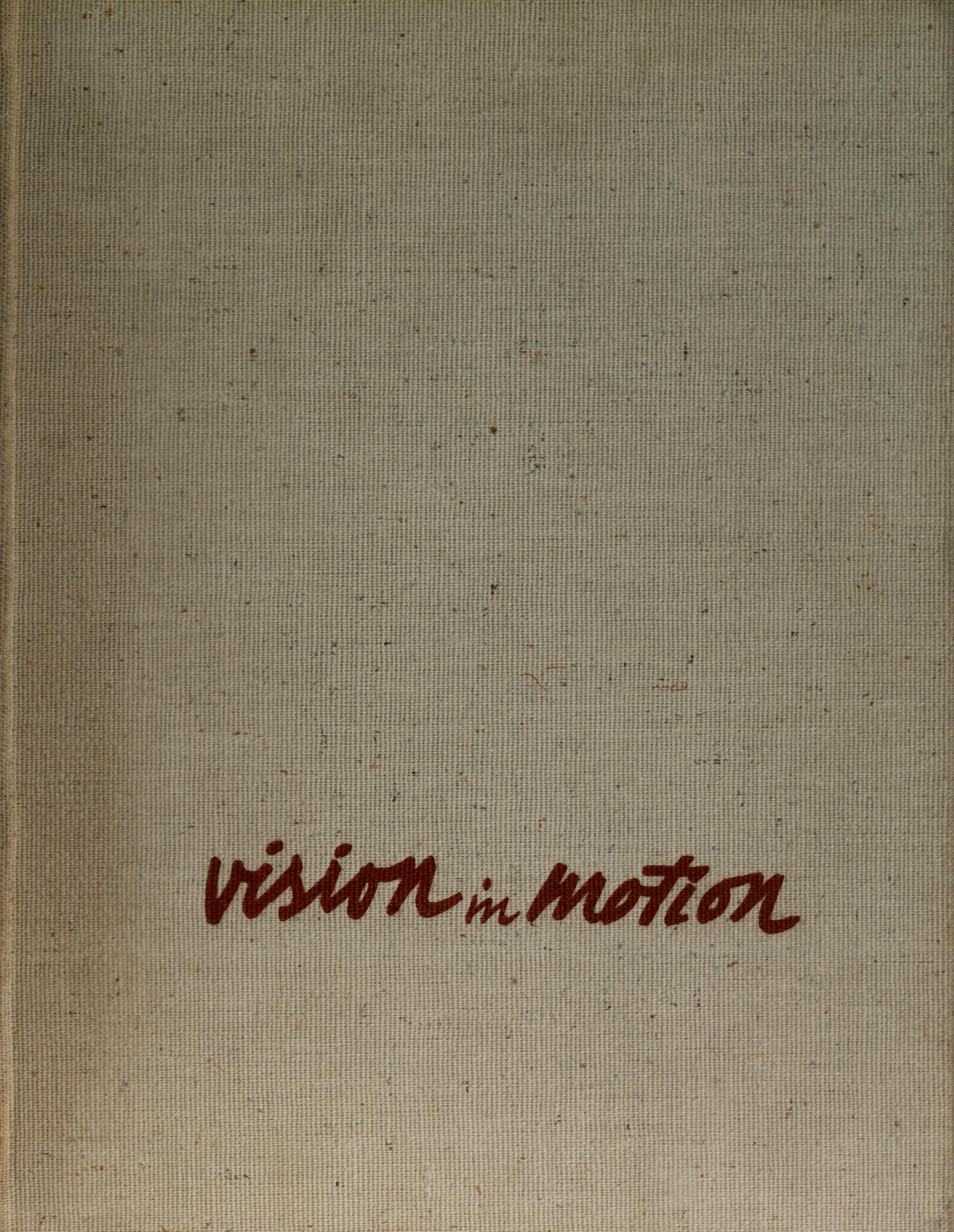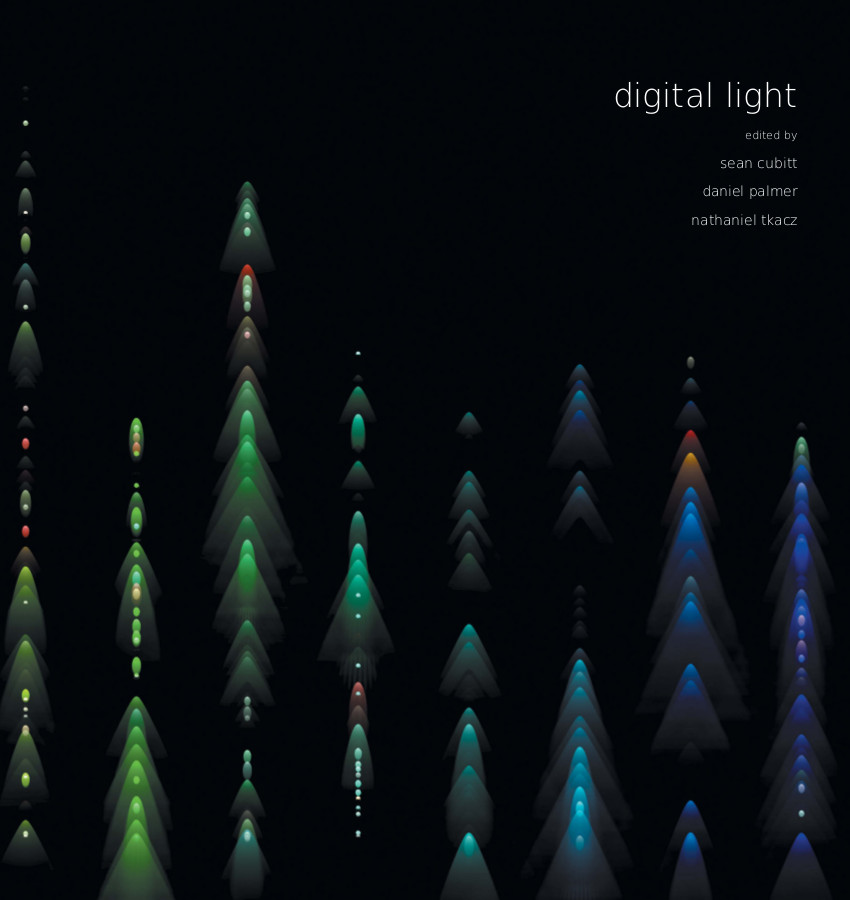L. Moholy-Nagy: Vision in Motion (1947)
Filed under book | Tags: · abstraction, architecture, art, art education, bauhaus, biology, design, film, image, industrial design, life, light, literature, machine, motion, painting, perception, photography, poetry, sculpture, technology, visual communication, visual poetry

“This book is written for the artist and the layman, for everyone interested in his relationship to our existing civilization. It is an extension of my previous book, The New Vision. But while The New Vision gave mainly particulars about the educational methods of the old Bauhaus, Vision in Motion concentrates on the work of the Institute of Design, Chicago, and presents a broader, more general view of the interrelatedness of art and life.” (from the author’s foreword)
Publisher Paul Theobald, Chicago, 1947
371 pages
PDF (114 MB, no OCR)
Comments (2)Sean Cubitt, Daniel Palmer, Nathaniel Tkacz (eds.): Digital Light (2015)
Filed under book | Tags: · aesthetics, art, cinema, digital, film, image, light, optics, photography, screen, technology, vision

“Light symbolises the highest good, it enables all visual art, and today it lies at the heart of billion-dollar industries. The control of light forms the foundation of contemporary vision. Digital Light brings together artists, curators, technologists and media archaeologists to study the historical evolution of digital light-based technologies. Digital Light provides a critical account of the capacities and limitations of contemporary digital light-based technologies and techniques by tracing their genealogies and comparing them with their predecessor media. As digital light remediates multiple historical forms (photography, print, film, video, projection, paint), the collection draws from all of these histories, connecting them to the digital present and placing them in dialogue with one another.
Light is at once universal and deeply historical. The invention of mechanical media (including photography and cinematography) allied with changing print technologies (half-tone, lithography) helped structure the emerging electronic media of television and video, which in turn shaped the bitmap processing and raster display of digital visual media. Digital light is, as Stephen Jones points out in his contribution, an oxymoron: light is photons, particulate and discrete, and therefore always digital. But photons are also waveforms, subject to manipulation in myriad ways. From Fourier transforms to chip design, colour management to the translation of vector graphics into arithmetic displays, light is constantly disciplined to human purposes. In the form of fibre optics, light is now the infrastructure of all our media; in urban plazas and handheld devices, screens have become ubiquitous, and also standardised. This collection addresses how this occurred, what it means, and how artists, curators and engineers confront and challenge the constraints of increasingly normalised digital visual media.
While various art pieces and other content are considered throughout the collection, the focus is specifically on what such pieces suggest about the intersection of technique and technology. Including accounts by prominent artists and professionals, the collection emphasises the centrality of use and experimentation in the shaping of technological platforms. Indeed, a recurring theme is how techniques of previous media become technologies, inscribed in both digital software and hardware. Contributions include considerations of image-oriented software and file formats; screen technologies; projection and urban screen surfaces; histories of computer graphics, 2D and 3D image editing software, photography and cinematic art; and transformations of light-based art resulting from the distributed architectures of the internet and the logic of the database.”
Publisher Open Humanities Press, London, 2015
Fibreculture Books series
Creative Commons BY-SA 4.0 License
ISBN 1785420089, 9781785420085
224 pages
Review: Mathias Denecke (Culture Machine, 2016).
PDF, PDF, PDF (4 MB, updated on 2016-7-19)
Comment (0)Friedrich Kittler: The Truth of the Technological World: Essays on the Genealogy of Presence (2013–) [DE, EN]
Filed under book | Tags: · antiquity, computing, cybernetics, film, information theory, literary theory, literature, media, media technology, media theory, noise, philosophy, psychoanalysis, software, sound recording, technology, telegraphy, theory, typewriter, war, writing

“Few German scholars in the past 50 years have had such a lasting impact on the cultural situation of our time, including its academic institutions, as Friedrich Kittler. It is in large part due to his writings that the radio, the gramophone, and the computer are not just objects of cultural fascination, but also of philosophical reflection.
This volume contains a collection of essays written by Kittler over the course of 40 years which serve as a testament to the enormous breadth, intensity, and the singular creativity of his thought.”
German edition
Edited and with an Afterword by Hans Ulrich Gumbrecht
Publisher Suhrkamp, Berlin, 2013
ISBN 9783518732984
432 pages
English edition
Translated by Erik Butler
Publisher Stanford University Press, 2014
ISBN 9780804792622
400 pages
Reviews: Oliver Jahraus (zfm, 2014), Stavros Arabatzis (Weimarer Beiträge, 2014).
Publisher (DE)
Publisher (EN)
Worldcat (DE)
Worldcat (EN)
Die Wahrheit der technischen Welt (German, EPUB, updated on 2019-11-2)
The Truth of the Technological World (English, updated on 2019-11-2)

